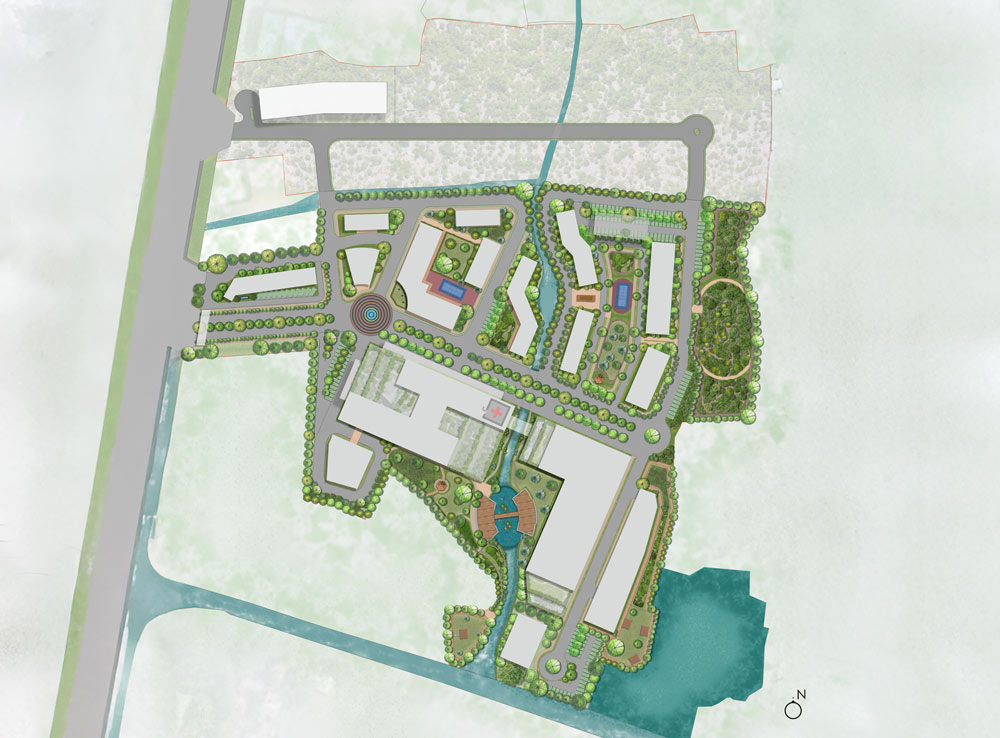Jun 20, 2025
Le Corbusier once said, “To create architecture is to put in order. Put what in order? Function and objects."
A simple quote that emphasizes the importance of clarity and organizing in architecture and design, proving that focus should always be on functional and spatial arrangement of design elements.
Corbusier, one of the prominent city planners and influential architects have designed the renowned example of modern urban design – the Chandigarh city. With functionality and aesthetics as integral points, Chandigarh’s master plan was built around the concept of imagining the city as a living organism with distinct zones for living, working, leisure, and circulation, designed to be self-sufficient and walkable.
But what makes Chandigarh widely considered to be a well-planned city?

Cities that Simply Function & Cities that Thrives
Like a jigsaw puzzle that brings together various pieces to reveal a bigger picture, master planning is a collaborative process –connecting scattered ideas and concepts into one, functioning community. Thoughtful urban planning starts when expertise from landscape design and civil engineering sectors collab together. The result is vibrant, well-knit communities.
A well-knit community emerges from the layout of streets, parks and parking spaces, pedestrian walkways and bike lanes, softscape and hardscape landscape elements. Clearly, it is more than a collection of buildings. Communities help people feel connected to one another, to required services and to shared spaces.
However, thoughtful planning brings the difference by ensuring that these connections are intentionally designed in a way as to be integrated into daily life seamlessly rather than being accidental.
Strategies for Creating Vibrant Communities
Integrating Land Use
Integrated land use blends residential areas with shops, schools, parks and workplaces, making it possible for people to have walkable neighborhoods with green corridors and accessible transportation facilities. This will further promote convenience and healthy lifestyle but also sustainability and inclusivity.
Sustainability and Inclusivity
Sustainability should be a priority from the beginning and not an afterthought. A carefully designed master plan should reduce environmental impact but also improve quality of life for the people. Think energy efficient buildings, rainwater harvesting and waste management systems – the possibilities are not limited. Along with sustainability, good planning should also accommodate inclusivity – diverse housing types, accessible infrastructure, and interactive public spaces, all for stronger social connections.
Community Engagement
Involving the residents in the planning process helps to develop a master plan that reflects their needs and priorities. This could be the beginning of shaping the neighborhoods by building trust and long-term ownership to a place they will care for and invest in the future.
Technology Integration
Cohesive planning can get even more better and streamlined to be efficient through apps that connect people and public services, helps in easy navigation of traffic for a safer, responsive environment.
.jpg)
Cohesive Developments: Shaping the cities of Tomorrow
Circling back to Corbusier’s Chandigarh planning – well-knit communities and cohesive developments are more than a design. They are the foundation for creating connections and environments where people belong.
Taking this as a focal point, we deliver tailor-made master planning designs for our projects that address key factors, including land uses, infrastructure, transportation, and public spaces. With a collaborative approach, we analyze the existing conditions of the site, transforming challenges into opportunities.
It is true that even the best city planning can have faults and falter without supportive governance and policies. But the real challenge is shaping the places socially, economically and environmentally for the future. Because when we design and plan with care, we build more than cities –we build better communities.